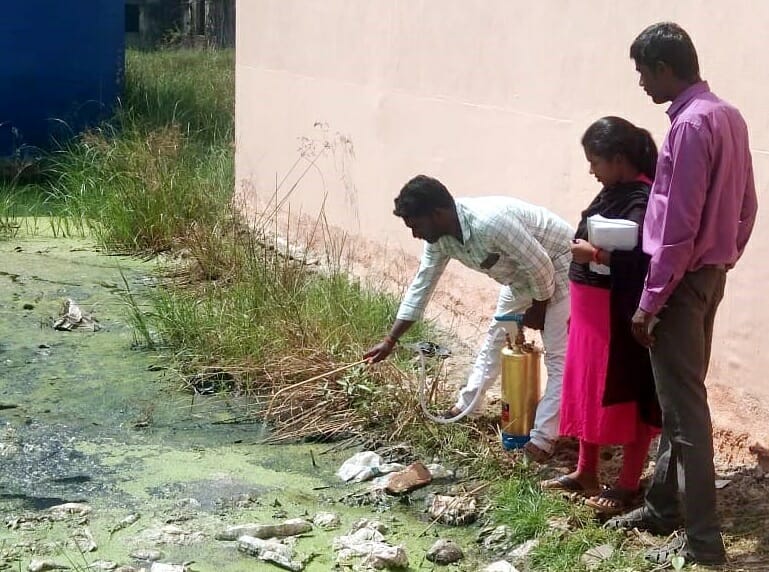“In my eight decades in Chennai, I have never faced such cold weather for so long”, says 86-year-old S Krishnamurthy, a resident of Alandur.
Chennai residents have felt the effects of winter linger longer than usual this year, well into the early weeks of February.
Frequent floods, drier summers and longer winters are all now a part of life in Chennai.
Could climate change be behind these anomalies?
Read more: More rainy days, more rainfall: CSTEP report predicts climate change impact on Chennai
Winter trends in Chennai
K Srikanth, an independent weather blogger running the platform Chennai Rains- ‘Chennayil Oru Mazhai Kaalam-COMK’ – says that the past winter has been subpar because of the stronger easterlies under the influence of the fading La Nina effect.
“The dip in temperature in the first week of February was the last of winter conditions for Chennai and its suburbs before summer begins,” he says.
For Chennai, the winter normally starts only when the North East Monsoon (NEM) ends. In other words, rains dominate in November and December and winter sets in January and ends by February.
“However, there are two reasons why our city experiences milder winters- its proximity to the coast of Bay of Bengal; Chennai is relatively closer to the equator,” says Srikanth.
An official from the Regional Meteorological Centre (RMC), Chennai explains that cold air from the north via sea made the temperature drop drastically by 4°C on two or three days in January 2023.
“As per scientific data taken by RMC, we always calculate the average for a period of 30 years like 1990 to 2020 or 2020 to 2050,” says the official, adding that Chennai did have fog and cold weather for a few days but it wasn’t out of the ordinary.
Pradeep John, an independent weather blogger, says “Although the chilly weather was an anomaly, with day temperature of 25°C in Chennai being rare, it has happened in the past. Whenever depression stays close to the Tamil Nadu coast in November end or December and does not move in, it drags cold winds from North and along with strong winds, it makes for cold days.”
“For instance, in the last 50 years, such cold days occurred more frequently than before. Chennai is hot from mid-March to mid-October. November to February is a pleasant period for Chennai,” says Pradeep.
Cooler winters and drier summers might become the norm
Sangeetha Sivadasini, Climate Reality Leader and Project Coordinator for the Green Tamil Nadu Mission says, “Chennai has been facing unusually chill winter days.”
The chilly weather has contributed to an increase in the number of mosquitoes and vector-borne diseases as a result. The civic body has highlighted that prolonged cooler temperatures have created an ideal condition for mosquitoes to thrive for longer, a phenomenon not seen previously during this time of the year.
But it’s not just anomalous winters that Chennaiites should be worried about. Climate change could also bring with it drier summers in the coming months.
“This summer is expected to be drier and hotter, than the previous years. Our rainfall pattern has changed and the usually dry spells in Chennai during April-May will create a high demand for water supply. It is definitely a cause of concern as we are a coastal city and in the coming years, Chennai city may face sudden extreme climate events often,” says Sangeetha.
Read more: Explained: Climate change jargon and what they mean for Chennai and its citizens
Need for climate action in Chennai
Climate change should not be looked at through the lens of single-day events. Instead, it should be seen over a period of time and mitigation measures must be planned accordingly.
“Chennai has a green cover of 22.70 % with 430.07 sq km and has lost of 26% of its green cover in a little over a decade (ISFR 2011 & 21). With the loss of urban and peri-urban green cover, it is very difficult to mitigate and adapt to the climate change effects,” says Sangeetha.
More trees must be planted to mitigate the urban heat island effect as most of Chennai’s surfaces are paved with concrete and roads. These reflect heat into the atmosphere making it warmer compared to the surrounding outskirts which are not concretised.
The Greater Chennai Corporation has also come up with the draft of the Chennai City Climate Action Plan which details the strategies to battle climate change in the city. More civic projects to mitigate carbon emissions are also being greenlit.
Tackling climate change also involves the role of the general public.
The most crucial factor is creating a change in mindset and considerable effort must be taken towards a sustainable living in every aspect of life.
A multi-stakeholder approach is essential to tackle climate change and its impact. While residents must take responsibility in areas such as proper waste disposal and nurturing green cover, policy interventions aimed at climate action must drive these efforts and incentivise residents and commercial entities to embrace practices that help build climate resilience.
